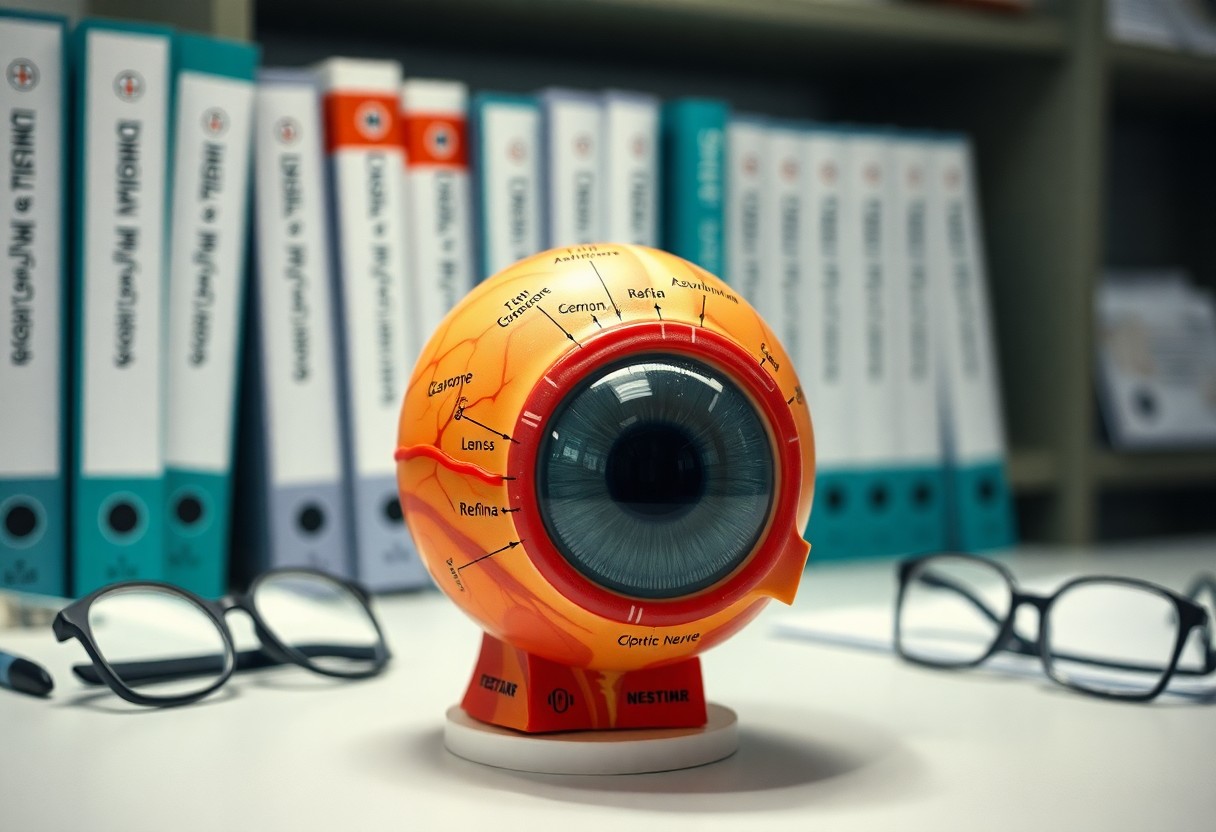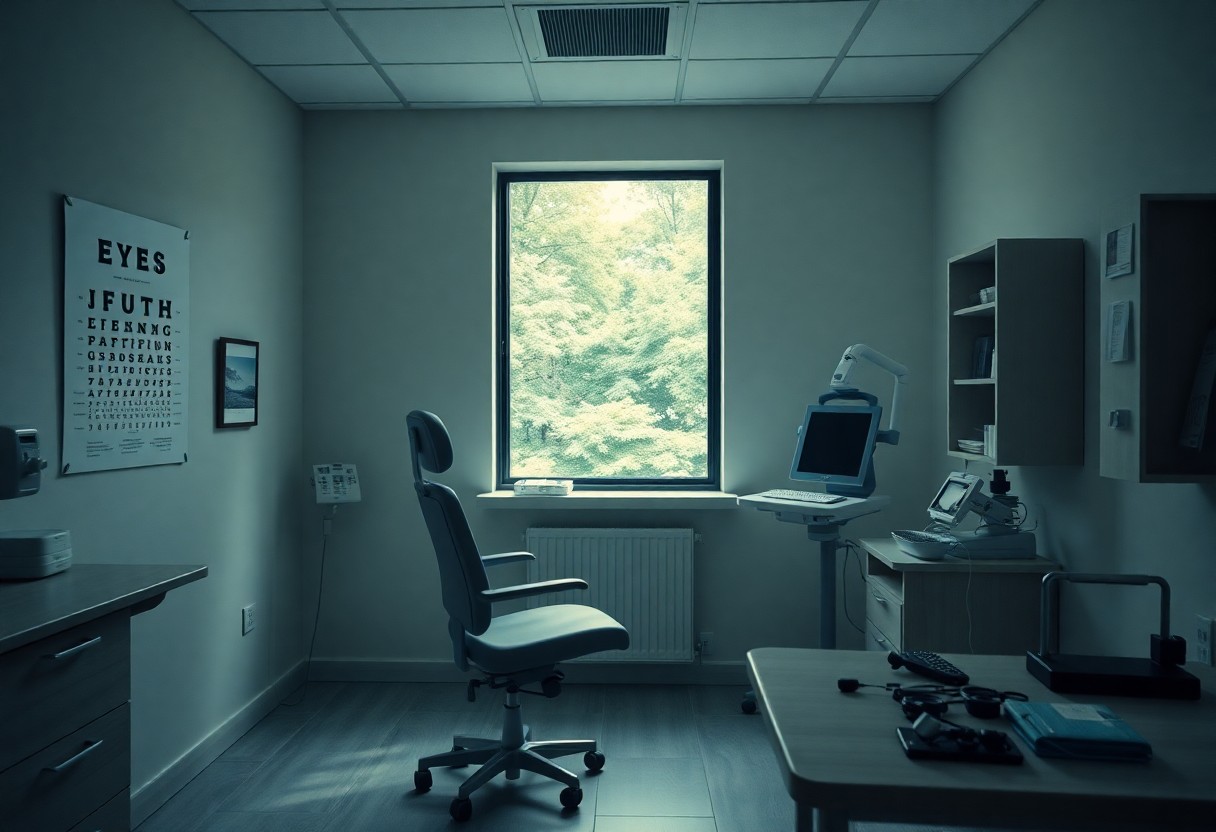Over the years, maintaining eye health has become increasingly imperative for your overall well-being. This comprehensive guide will equip you with the knowledge you need to understand common eye conditions, explore preventive care strategies, and discover tips for maintaining optimal vision. Whether you seek to enhance your daily eye care routine or address specific concerns, this resource aims to empower you with valuable insights for nurturing your eyes.
Key Takeaways:
- Understanding common eye conditions helps in early detection and treatment.
- Regular eye exams are vital for maintaining overall eye health.
- Nutrition and lifestyle choices significantly impact vision quality.
- Protecting eyes from UV exposure is vital for long-term health.
- Proper contact lens care is important to prevent infections and complications.

Demystifying Sight: The Anatomy of the Eye
Understanding the anatomy of your eye is imperative for appreciating how vision works. Each eye consists of several intricate structures, including the cornea, lens, retina, and optic nerve. These components collaborate to capture and interpret light, enabling you to see the world around you in detail. By learning about each part and its role, you can better grasp the complexity of vision and the importance of maintaining eye health.
Key Structures: How They Work Together
In your eye, key structures act in harmony to facilitate vision. The cornea and lens focus incoming light onto the retina, where specialized cells convert it into electrical signals. These signals travel through the optic nerve to the brain, which processes and interprets them, allowing you to perceive shapes, colors, and movements. Each element plays a vital role in ensuring that your visual experiences are sharp and clear.
The Visual Processing: From Retina to Brain
The journey of visual information begins at the retina, where photoreceptor cells called rods and cones detect light and color. This transformation into electrical impulses occurs within milliseconds, sending data through the optic nerve to the brain’s visual cortex. Here, complex processing occurs, allowing you to perceive and comprehend what you’re seeing. This seamless transition gives you the ability to react and navigate your environment almost instantaneously.
After light hits the retina, the signals generated are sent through a network of neurons to the lateral geniculate nucleus (LGN) in the thalamus. From the LGN, information is transmitted to the primary visual cortex located at the back of your brain. Here, various aspects of the visual input such as color, contrast, and movement are dissected. The integration of these elements allows you to build a coherent understanding of your surroundings. This process happens remarkably fast, making it possible for you to respond to visual stimuli with agility and precision, whether it’s catching a ball or noticing a car approaching.
Eye Conditions That Can Alter Your World
Various eye conditions can significantly impact your daily life and overall well-being. From mild discomfort to severe vision impairment, understanding these issues is important for proactive eye care. Identifying symptoms early can lead to more effective treatment options, helping you maintain a clear view of the world around you.
Common Afflictions: Cataracts, Glaucoma, and More
Cataracts and glaucoma are among the most prevalent eye conditions that can diminish your vision. Cataracts, characterized by clouded lenses, often develop due to aging, leading to blurred or dim vision. Glaucoma, on the other hand, results from increased eye pressure, which can damage the optic nerve, sometimes without noticeable symptoms until significant damage occurs. Regular eye exams are vital for early detection and management of these conditions.
The Silent Dangers: Exploring Diabetic Retinopathy
Diabetic retinopathy quietly threatens the sight of individuals with diabetes, often without noticeable symptoms until it is too late. Over time, high blood sugar levels damage the blood vessels in the retina, leading to leakage, swelling, and even vision loss. Maintaining optimal blood sugar control greatly reduces risk, but regular eye check-ups remain important for early detection and intervention.
Statistics reveal that nearly one in three individuals with diabetes over the age of 40 has some form of diabetic retinopathy. Symptoms can begin subtly with blurred vision and progress to floaters or dark patches in your field of vision. Advanced stages may lead to permanent vision loss. Screening is crucial; even if you feel fine, underlying damage can occur. Options like laser treatments and eye injections can help manage and mitigate the effects if caught early, underscoring the value of routine eye examinations tailored for those with diabetes.
Unveiling the Importance of Regular Eye Exams
Regular eye exams play a pivotal role in maintaining optimal vision and overall eye health. These check-ups not only help identify vision changes but also serve as a preventative measure against serious eye diseases. By prioritizing these visits, you empower yourself to take charge of your eyesight, ensuring any issues are addressed promptly and effectively.
What to Expect During an Eye Check-Up
Your eye check-up will typically begin with a review of your medical history and any vision problems you’ve encountered. An optometrist will then perform a series of tests, including visual acuity assessments, refraction to determine your prescription, and examinations of the eye’s structure using specialized equipment. Expect to have your pupils dilated for a thorough evaluation of the retina and optic nerve.
Identifying Risks and Disorders Early
Early detection of eye disorders can significantly alter treatment outcomes. Common conditions like glaucoma, macular degeneration, and diabetic retinopathy often present no symptoms in their early stages. Regular exams enable your eye care professional to spot early signs of these conditions, allowing for timely intervention that can preserve your vision and prevent further complications.
Each of these disorders can lead to severe consequences if left unchecked. For example, untreated glaucoma can result in irreversible vision loss, while early-stage diabetic retinopathy may be manageable with lifestyle changes and treatments if diagnosed promptly. Studies indicate that individuals over 40 or with a family history of eye diseases are particularly at risk, underscoring the value of consistent eye examinations in proactively safeguarding your eye health.
The Impact of Lifestyle Choices on Vision Health
Your lifestyle choices greatly affect your vision health, influencing the risk of conditions like cataracts, macular degeneration, and glaucoma. Regular exercise, smoking cessation, and managing chronic diseases like diabetes can enhance your eye health. Additionally, minimizing exposure to UV light and maintaining a healthy weight plays a significant role. For more insights on improving your vision health, check out the Checklist for Better Vision and Eye Health.
Nutrition’s Role: Foods That Promote Eye Health
The Relationship Between Screen Time and Eye Strain
Prolonged screen time can lead to digital eye strain, characterized by symptoms like dryness, irritation, and blurred vision. You often find yourself squinting or experiencing headaches after extensive periods staring at screens. The blue light emitted can also contribute to these discomforts. Taking regular breaks, adjusting your screen settings, and ensuring proper lighting in your workspace are effective strategies to mitigate eye strain and preserve your vision.
Innovations in Eye Care: The Future of Vision
Emerging technologies are revolutionizing eye care, paving the way for enhanced diagnosis, treatment, and prevention of vision disorders. From advanced imaging techniques to AI-driven diagnostics, the future of vision promises not only improved outcomes but also personalized approaches tailored to individual needs. Communities and practices are already experiencing results from these innovations, highlighting the importance of staying informed about the latest advancements in eye health.
Cutting-Edge Technologies in Ophthalmology
Ophthalmology has witnessed remarkable innovations, such as optical coherence tomography (OCT) and digital retinal imaging, which provide high-resolution images of the eye’s structures. These technologies enable early detection of diseases, including glaucoma and macular degeneration, significantly improving treatment success rates. You can expect these diagnostic tools to become even more accessible, enhancing your overall eye care experience.
Advancements in Vision Correction: Beyond Glasses
Vision correction options have evolved beyond traditional glasses and contact lenses, with innovative solutions like corneal refractive surgery and implantable lenses gaining popularity. These advancements cater to various vision impairments, providing more effective and lasting results. You can explore these alternatives to find options that fit your lifestyle and preferences.
Corneal refractive surgery, including LASIK and PRK, offers a permanent solution by reshaping the cornea to improve light focusing. Additionally, implantable lenses, which are surgically placed in the eye, address refractive errors without altering the cornea’s structure. With these advancements, individuals who once relied on glasses or contacts can enjoy clearer vision and a more active lifestyle. The increased precision of these procedures, supported by technological advancements, allows for safer outcomes and quicker recoveries, ultimately enhancing your visual quality and overall well-being.
Summing up
The guide provided you with comprehensive insights into maintaining optimal eye health and care. By understanding the importance of regular eye examinations, proper nutrition, and protective measures, you can significantly enhance your vision and overall well-being. Embracing these practices not only aids in preventing eye-related issues but also empowers you to make informed decisions about your eye health. Prioritizing your vision today ensures that you enjoy clear sight and a better quality of life in the future.
FAQ
Q: What are the common eye health issues people face?
A: Common eye health issues include refractive errors (such as nearsightedness and farsightedness), cataracts, glaucoma, age-related macular degeneration, and dry eye syndrome.
Q: How often should I have my eyes examined?
A: It is recommended to have an eye exam every one to two years, depending on age and any existing vision problems. Those over 60 or with specific risk factors may need more frequent checks.
Q: What are some tips for maintaining healthy eyes?
A: To maintain healthy eyes, eat a balanced diet rich in fruits and vegetables, protect your eyes from UV light with sunglasses, take regular breaks from screens, and avoid smoking.
Q: What should I do if I experience sudden vision changes?
A: If you experience sudden vision changes, such as flashes of light, loss of vision, or seeing floaters, seek immediate medical attention as these can be signs of serious eye conditions.
Q: Are there specific exercises to improve eye health?
A: While there are no exercises to significantly improve vision, practicing the 20-20-20 rule (taking breaks to look at something 20 feet away for 20 seconds every 20 minutes) can help reduce eye strain.

Leave a Reply